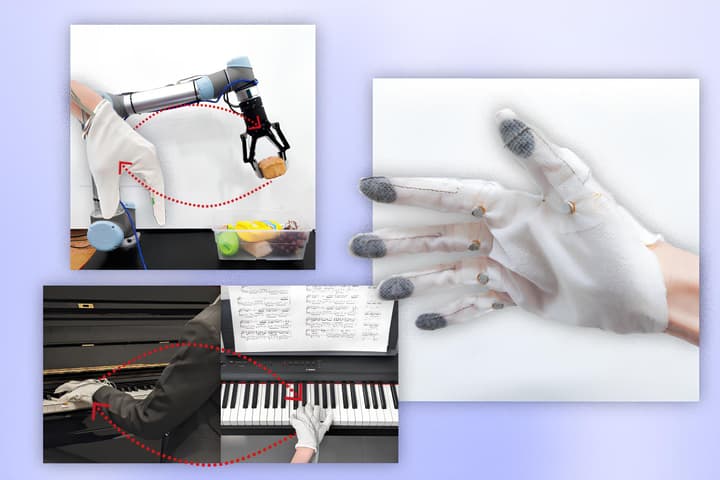Tactile
-
Some folks prefer to get a grip on things to better understand concepts. Researchers have developed smart gloves for tactile learners that use haptic feedback and AI to teach users new skills, fast-track precision training and control robots remotely.
-
Using touchscreens or buttons to control devices isn't always practical, and voice commands may not work in loud environments. A new system offers an alternative, in that it utilizes acoustic waves which travel across the surface of existing objects.
-
While technology is making strides in absorbing our eyes and ears in virtual worlds, it’s harder to engage senses like touch. Engineers have now developed WeTac, a thin, wearable electronic "skin" that provides tactile feedback to users in VR and AR.
-
Although there already are experimental "telehaptic" systems that allow people to send and receive tactile sensations, they tend to be bulky and awkward. A new one is much slimmer and thus more practical, thanks to the use of piezoelectric materials.
-
Along with providing users with sights and sounds, some VR systems also deliver tactile sensation to the hands. A new ultrasound-based setup, however, lets users feel the virtual world on and in their mouths – without making physical contact.
-
When someone injures a nerve in a body part such as a finger, it's not uncommon for that part to end up with a permanently decreased sense of touch. A self-powered implantable sensor, however, could one day restore sensitivity to such injured areas.
-
We've already seen tactile-feedback displays that convey information by applying tiny vibrations to the user's fingertips. An experimental new technology takes a different approach, however – it gets sticky in select areas.
-
Amongst the challenges faced by the deaf is what's known as the "cocktail party effect," in which they have difficulty discerning one speaker's voice from others in crowded, noisy environments. A new device could help, however – by buzzing two of their fingers.
-
Anyone who has played a game of Jenga will know the delicate touch required to keep the tower of wooden blocks from crashing down, and it’s not the kind of finesse you’d associate with a typical robot. But MIT's robot arm can push and prod with the best of them.
-
When people want to experience tactile feedback while exploring virtual reality environments, they use hand-held devices that vibrate in response to the touching of virtual surfaces. Now, however, scientists are developing gloves that reportedly provide a much more life-like experience.
-
Researchers are developing an artificial nervous system for robots, a tool they believe will better equip these machines to avoid damage and preserve their well-being.
-
Sending ultrasound waves through the back of hand to deliver tactile sensations to the front might sound a little far-fetched, but by achieving just that UK scientists claim to have cleared the way for computers that use our palms as advanced interactive displays.
Load More











